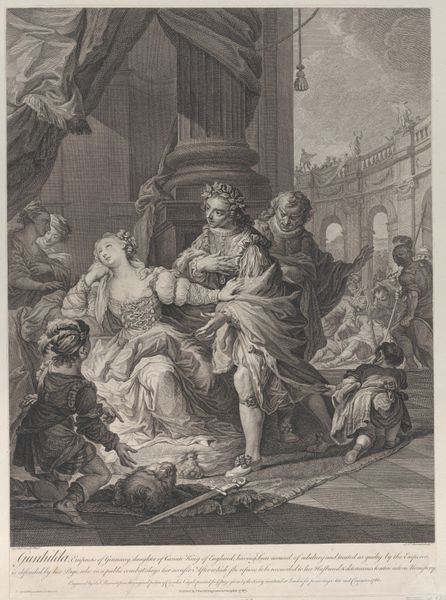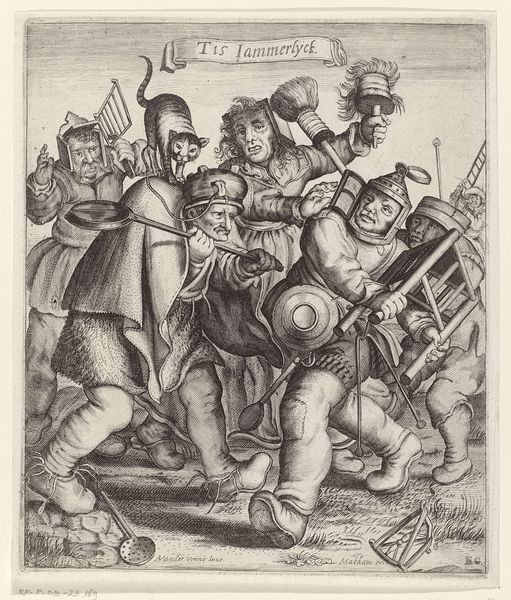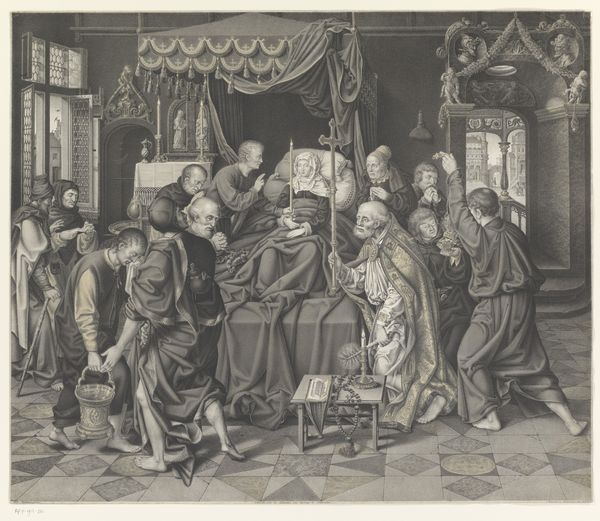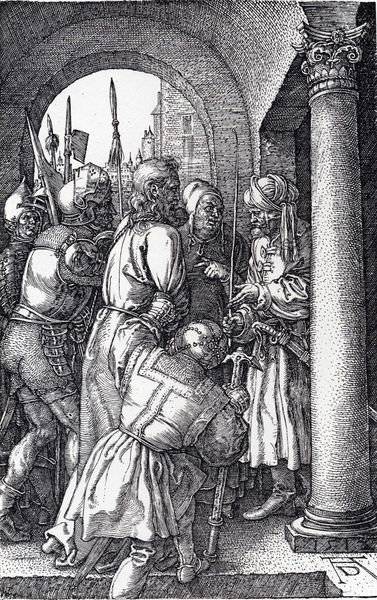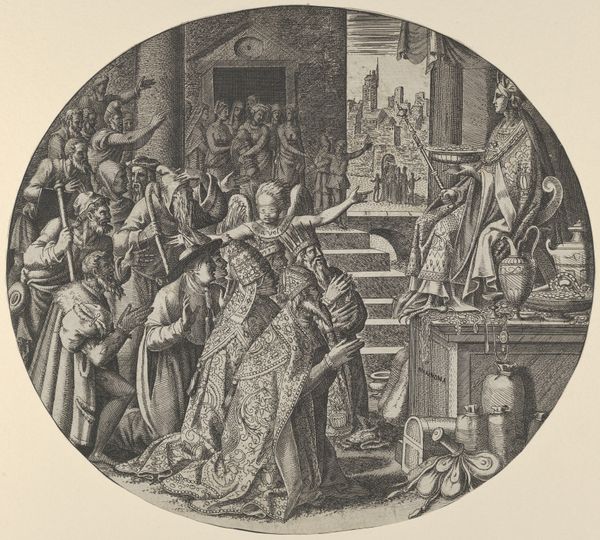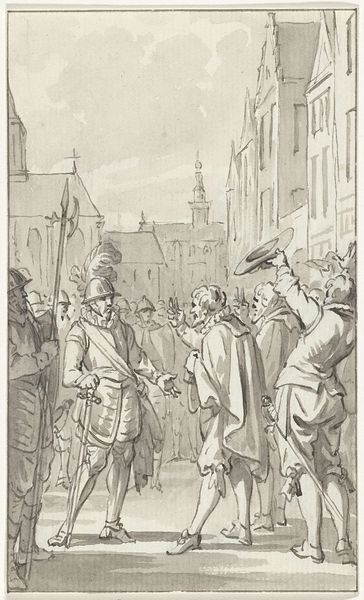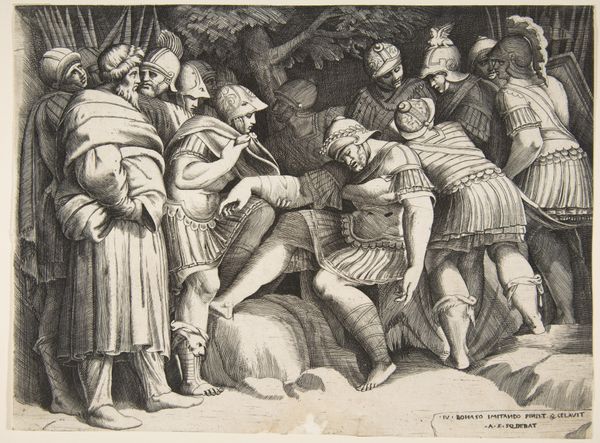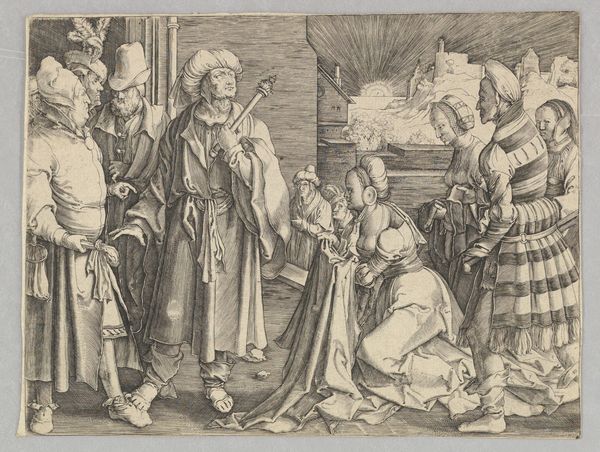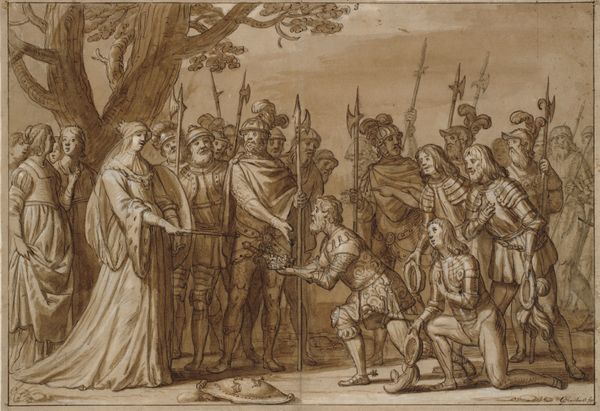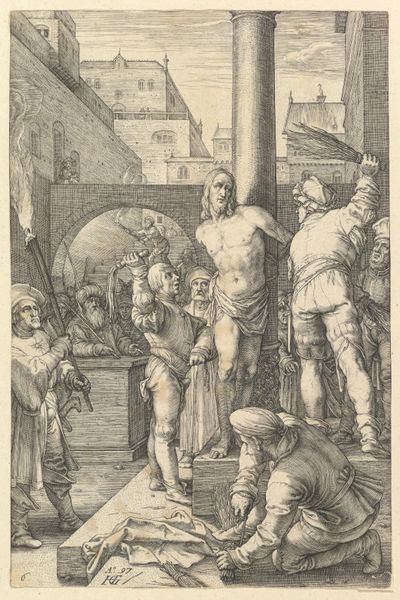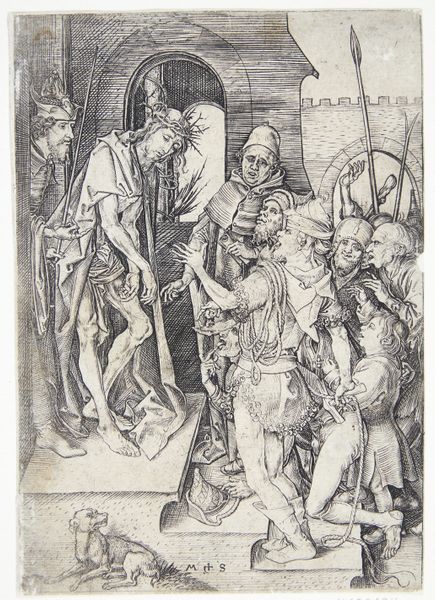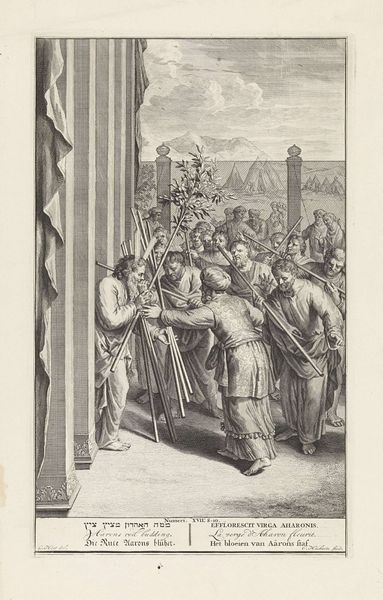
Frederik II Builds Kronborg Castle at Elsinore 1781 - 1782
0:00
0:00
painting, oil-paint, canvas
#
portrait
#
neoclacissism
#
painting
#
oil-paint
#
oil painting
#
canvas
#
group-portraits
#
history-painting
#
portrait art
Dimensions: 309 cm (height) x 197 cm (width) (Netto)
Editor: Here we have Nicolai Abildgaard's oil on canvas, "Frederik II Builds Kronborg Castle at Elsinore," painted between 1781 and 1782. The painting strikes me as staged, almost theatrical. What catches your eye from a formalist perspective? Curator: Indeed. The composition is meticulously arranged. Observe how Abildgaard employs a pyramidal structure, anchoring the figures and leading the eye upward. The play of light and shadow across their faces accentuates the contours of power, drawing our attention to Frederik II, placed at the vertex. How do you read his posture? Editor: He's pointing to the plans in his hand, exuding authority. But his gaze feels somewhat detached, almost dreamy, not quite engaging with the other figures around him. Is that significant? Curator: It invites speculation. Note the cool palette, typical of Neoclassical painting, contributing to the overall mood. It signals rationality, order, and a harking back to the idealized forms of classical antiquity. Abildgaard, here, uses line with great precision to achieve definition of shape. What is the effect of such careful geometry? Editor: It feels deliberate, reinforcing the idea of controlled power. The cannonballs and weaponry in the foreground create an interesting visual juxtaposition. They look so...organized! Curator: Precisely! The controlled display of military power contrasts subtly with the background scene where one can distinguish other dynamic scenarios that give life to the landscape around Kronborg castle, then, the military camp. Do you observe anything in particular about it? Editor: Yes! You can see construction being developed around, and soldiers doing every day things. Thanks for pointing it out. Overall, it's fascinating to examine how Abildgaard uses structure and line to create a sense of power and idealization. Curator: And how these choices invite us to decode the very ideas that underpin Neoclassical art: order, reason, and the aestheticization of power. I appreciated you pointing to Frederik's disengagement with his company, making me revisit that relationship of power in the work.
Comments
No comments
Be the first to comment and join the conversation on the ultimate creative platform.
